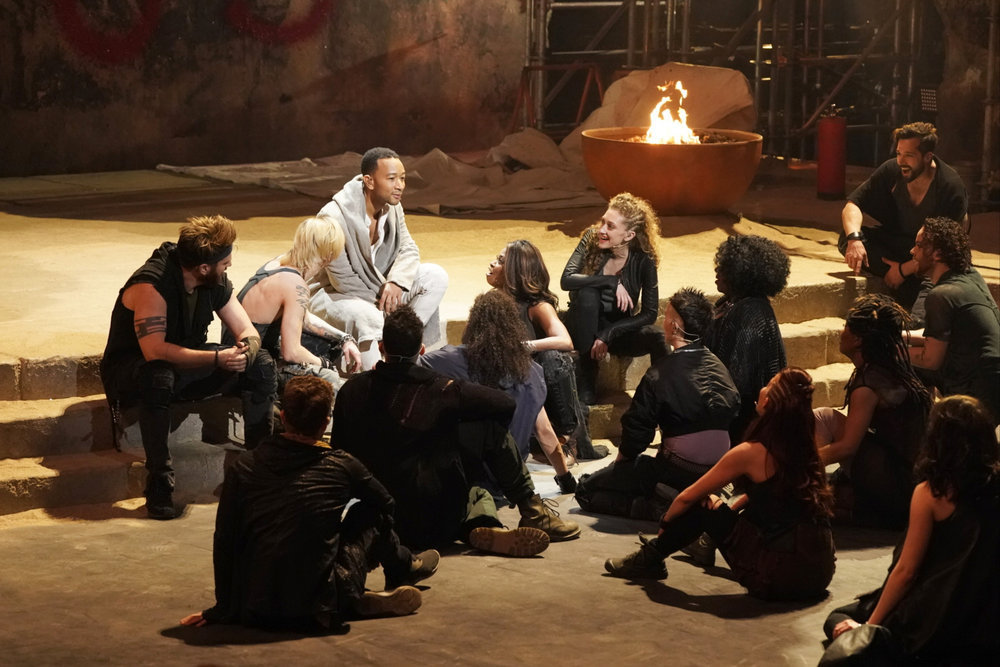
The film “Dear White People” has been raved about by many as the film to discuss and expose racism. It is a film intended to educate white people about racism and the micro-aggressions many people of color experience, offering a new kind of voice that Hollywood has historically repressed. However, this new film that is supposed to deal with racism, does not.
The film is riddled with black stereotypes and isn’t afraid of showing it. One of the posters for the film features the four leading black characters with their respective tropes written beneath them. The characters are Samantha White as “Rebel,” Lionel Higgins as “Token,” Troy Fairbanks as “Poster Child” and Coco Conners as “Diva.” In the film, the characters fall not so much into their advertised labels but into longstanding black tropes that offer nothing progressive or new to the film industry.
Coco, the self-hating dark-skinned girl who wants nothing to do with her own race, changes her own appearance to conform to the white gaze and Eurocentric standards of beauty. By creating this character, the film suggests that hating your own race and wanting nothing to do with it is okay, and that disassociating oneself with black culture is something one should want to do to become successful.
Coco also provides the film’s sex appeal. The film heavily sexualizes Coco – in every scene she is solely wearing tight or revealing clothing. Her sexualized character is tied to her dark skin. The best example of this is when Troy has sex with her towards the second half of the film, but leaves her soon after since he sees her as a sexual object.
Troy Fairbanks is presented as upper class, out of touch with his race and a political leader who is doing whatever he can to fulfill his father’s wishes. His class does not save him, since his character conforms to stereotypes commonly attached to young, black men. Throughout “Dear White People,” two of the leading black male characters and Coco use marijuana. There are three entire scenes dedicated to Troy’s smoking of marijuana. Meanwhile, the white characters partake in similar illegal activities, but the film portrays it casually. On the other hand, Troy’s character is tied to drug use and his smoking suggests that he has a problem.
Samantha White, the leading protagonist, embodies the most common trope – the “tragic mulatto.” She is torn between two worlds – whiteness, represented by her love interest and white savior Gabe, and blackness, represented by the Black Student Union, but specifically her other love interest Reggie. By illustrating this choice, the film makes the audience believe that what Sam was doing for the beginning of the film, trying to expose racism, was an attempt to conform to her own blackness. Her dilemma of feeling like she has to choose is a result of an American society that insists on racial classification as a primary means of identification and is so entrenched in a binary system of racial classification that you cannot be both black and white at the same time.
A character that actually breaks the trope is Lionel Higgins. He is a nerdy, awkward, gay and black character that is an insightful dynamic character. However, the way he is treated in the film says otherwise. Lionel feels that he doesn’t fit in with the black characters, that he isn’t black enough and that he’s too different to fit in with the white kids because he is too black and gay.
Additionally, Lionel’s sexuality is manipulated by white characters, and is only used to help make the movie seem more progressive. What’s worse is that every scene involving intimacy that he is in feels forced, and it is not consensual, which is uncomforting. By creating these stereotypes in the homosexual scenes, it falls into even more stereotypes that gay people are easily manipulated as shown by Lionel being manipulated, especially as those who manipulated Lionel use people for personal gain. Straight, gay and white people use him to either fit the black mold or the gay mold. While Lionel Higgins’ character is progressive, the ways he is abused are not and label those around him as more stereotypes.
The film is not successful in dealing with racism. The way it discusses racism does nothing to prevent it. There is only one scene that is very symbolic in unmasking racism. Multiple races reveal the racism towards the end of the film at the racist-themed party. Yet by the end of the film it still does nothing to really teach white people about race or help to be that new film pushing the envelope in educating white people on race.
“Dear White People” has great dialogue, amazing acting and beautiful cinematography. It is a well-produced film that should be praised for the work that was put into it. However, the film’s biggest issue is that many viewers will expect it to educate them on race when it does not. This film offers education on racism that depends on black stereotypes to make the white audience more comfortable and keeps white people uneducated and ignorant on race issues.
Troy Kowalchuk can be reached at [email protected].



















Bo Sears • Dec 4, 2014 at 6:03 pm
As members of the diverse white American peoples, at Resisting Defamation we found the film to be almost cartoonish insofar as it caricatured Asian Americans and white Americans. Both of those demographic affinity groups were portrayed without diversity and fundamentally without nationality.
If a film maker is sincere about preaching a concrete point, then he or she needs to take into account the diversity to be found in the other groups mentioned. The film certainly didn’t make any solid points about the diverse white Americans except to reduce them to caricatures. Good luck with teaching like that.